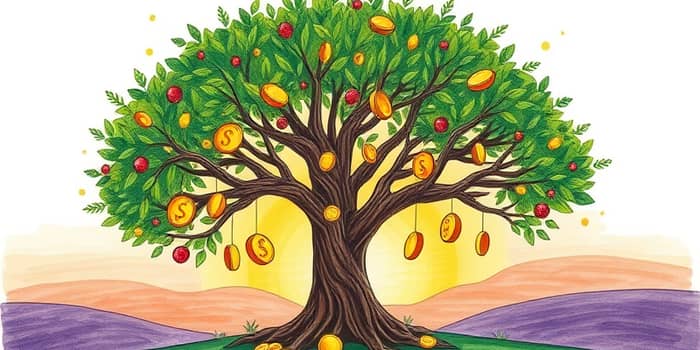
In today’s dynamic financial landscape, investors seek both growth and reliable income streams. Dividend growth stocks have emerged as a compelling solution, offering rising payouts and long-term stability. This article explores why income-oriented investors are particularly drawn to these holdings and how to harness their potential.
Dividend growth stocks are companies that consistently increase their dividend payouts over time. These firms typically display:
By prioritizing financial strength and sustainable cash flows, these companies can raise dividends even during economic headwinds. Investors benefit from an escalating income stream and a measure of downside protection.
For retirees and those relying on investment income, maintaining purchasing power is paramount. Dividend growth stocks deliver a rising stream of income, helping fund living expenses without tapping into principal.
Moreover, dividend increases can offset the impact of inflation. While cash and fixed-income yields may lag rising costs, growing dividends adjust over time, preserving real spending power.
Beyond practical income needs, dividend growers often exhibit lower price volatility than the broader market. This stability can provide peace of mind, particularly when economic uncertainty prevails.
Looking at nearly a century of data (1930–2024), dividends and reinvestment have accounted for about 40% of the S&P 500’s annualized total return. Share price appreciation made up the remaining 60%. This underscores the critical role of dividends in long-term wealth accumulation.
From 2008 to 2024, dividend growth stocks often outperformed peers that cut or froze dividends. They delivered higher total returns with lower standard deviations, illustrating the power of combining growth and income in one investment strategy.
Even amid a tech-driven decade favoring non-dividend-paying firms, income-seeking investors remained loyal to dividend growers for their predictability and resilience.
When building an income-focused portfolio, investors often weigh dividend growth stocks against high-yield and pure growth playbooks. Key distinctions include:
To harness the benefits of dividend growers while managing risk, investors can adopt these guidelines:
As retirement nears, gradually increasing the allocation to dividend growers can reduce portfolio volatility and support a reliable cash-flow plan.
Despite their appeal, dividend growth stocks carry inherent risks. Companies can cut or suspend dividends during severe downturns or corporate restructuring. Investors overly focused on yield may overlook critical fundamentals like revenue growth or debt levels.
Furthermore, periods of rapid market rallies—particularly in high-growth sectors—may see dividend payers underperform. A balanced approach helps mitigate this trade-off between stability and potential for outsized gains.
Recently, more mega-cap technology firms have joined the dividend paying ranks, signaling maturation and widening the universe of potential growers. As global economies contend with inflationary pressures and market volatility, demand for reliable, growing income is set to remain robust.
For income-oriented investors, dividend growth stocks offer a powerful combination of steady cash flow and the potential for capital appreciation. By focusing on quality, diversification, and a disciplined selection process, investors can build portfolios that withstand uncertain markets while enjoying a steadily increasing income stream.
Embrace the resilience and reliability of dividend growth stocks to forge a secure financial future, where your investments not only grow in value but also help fund your aspirations year after year.
References













